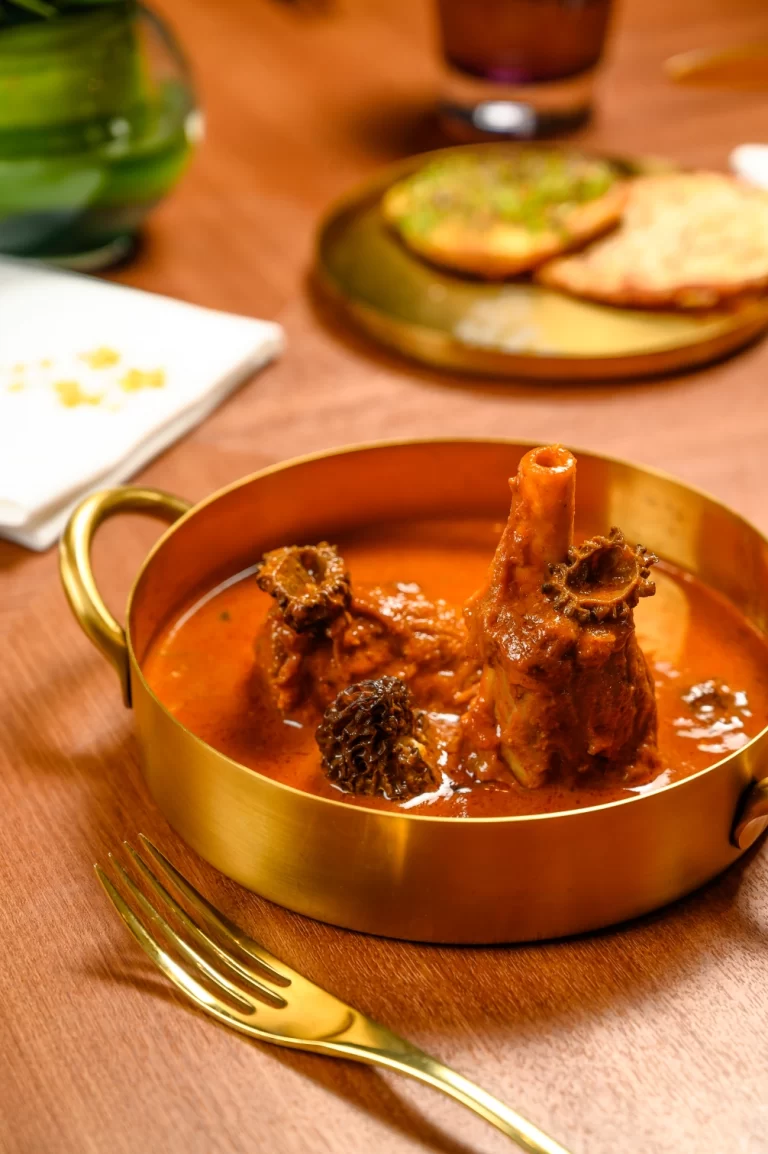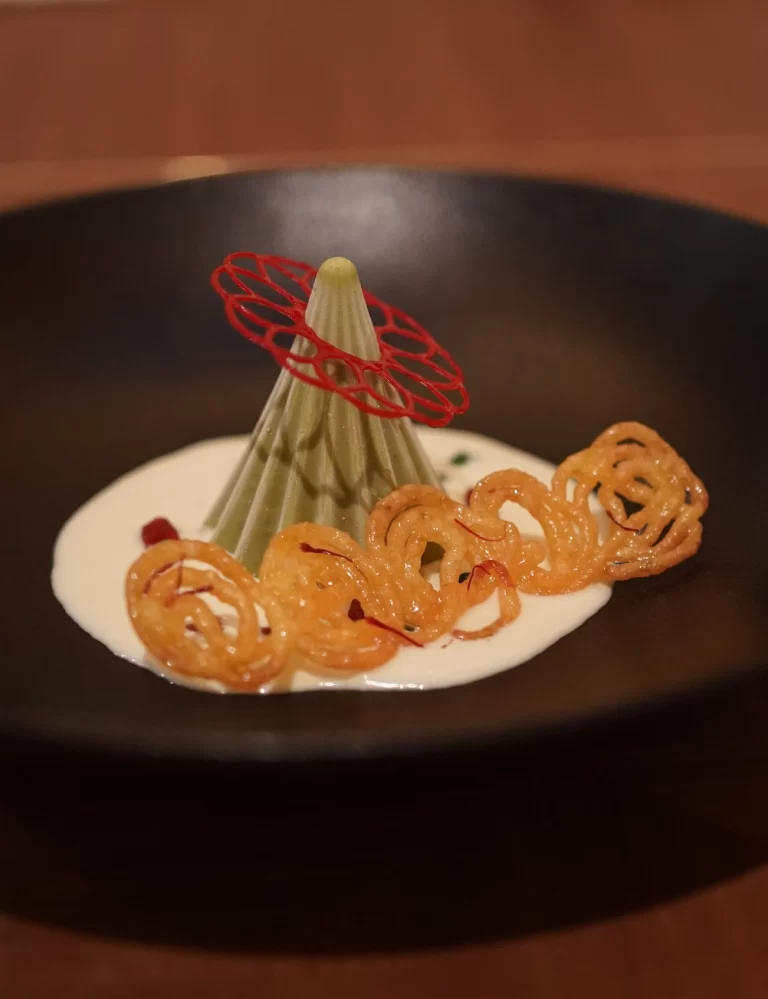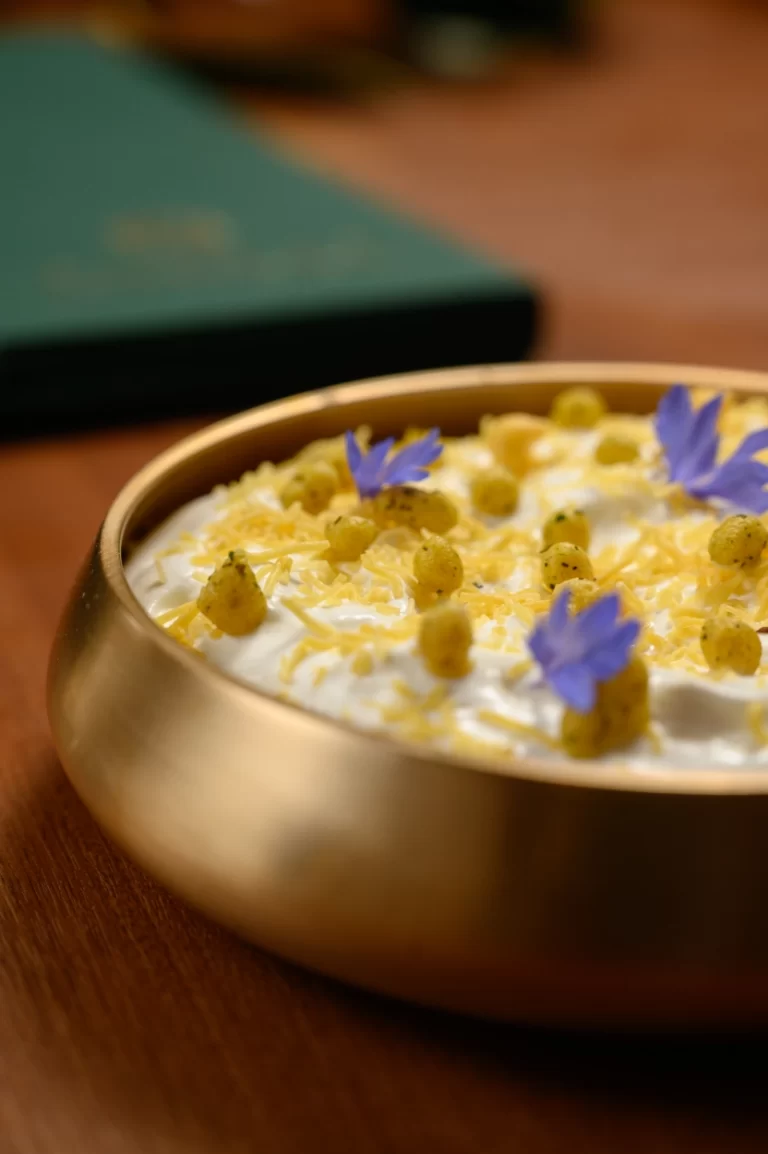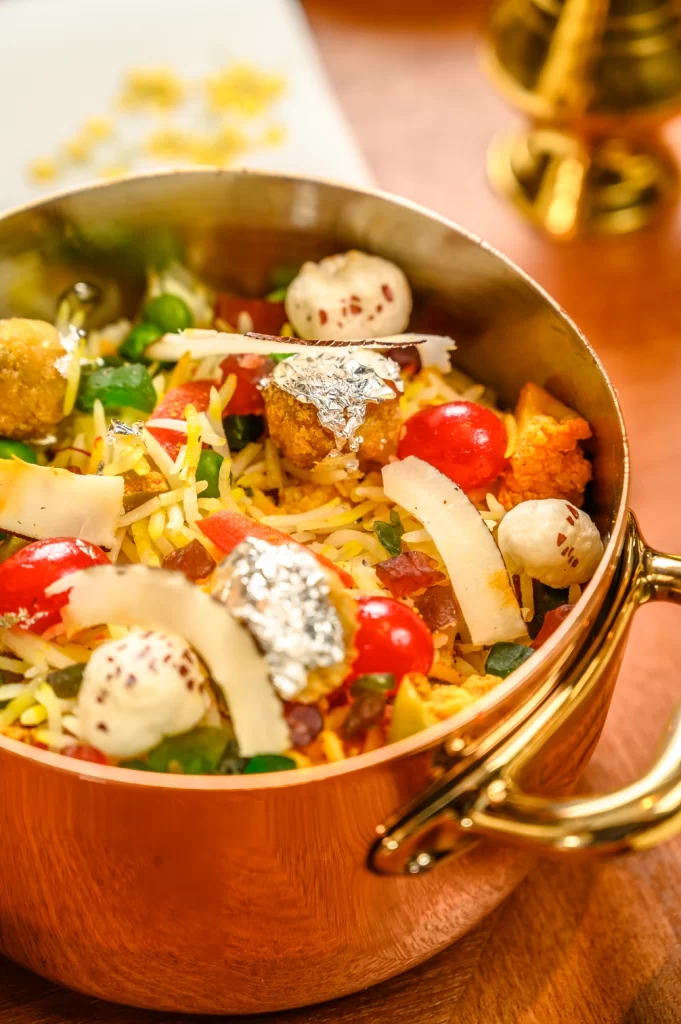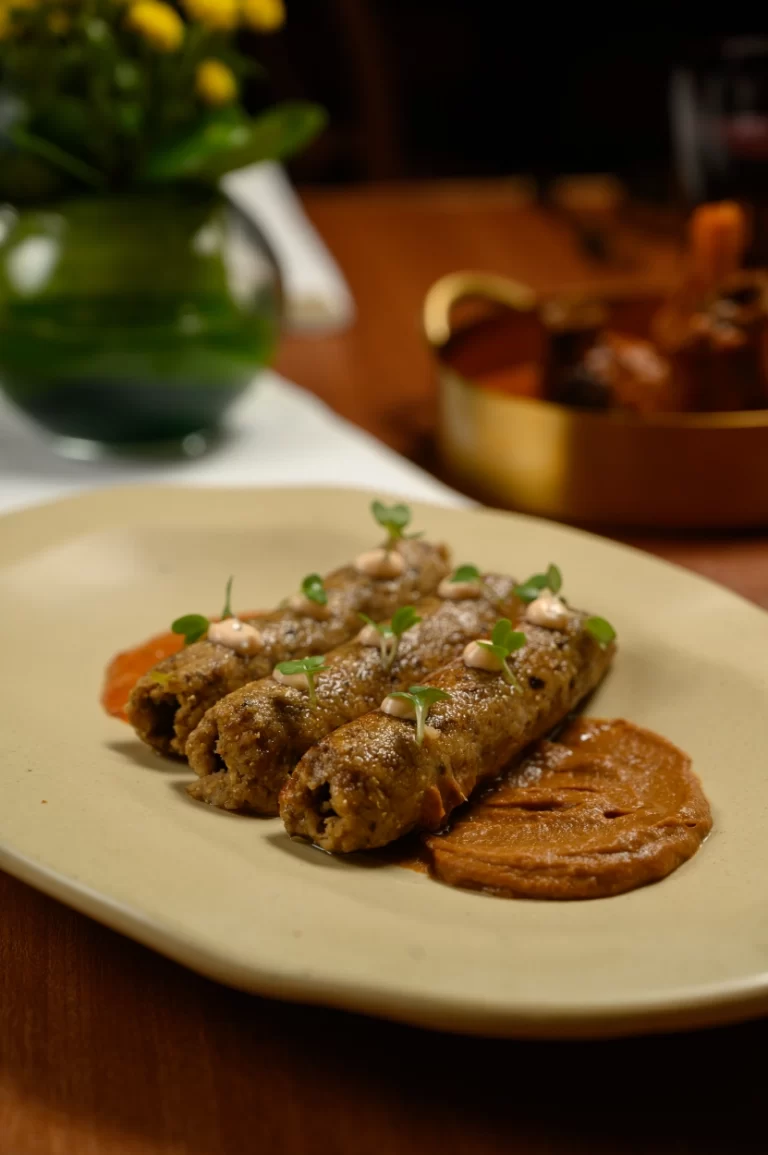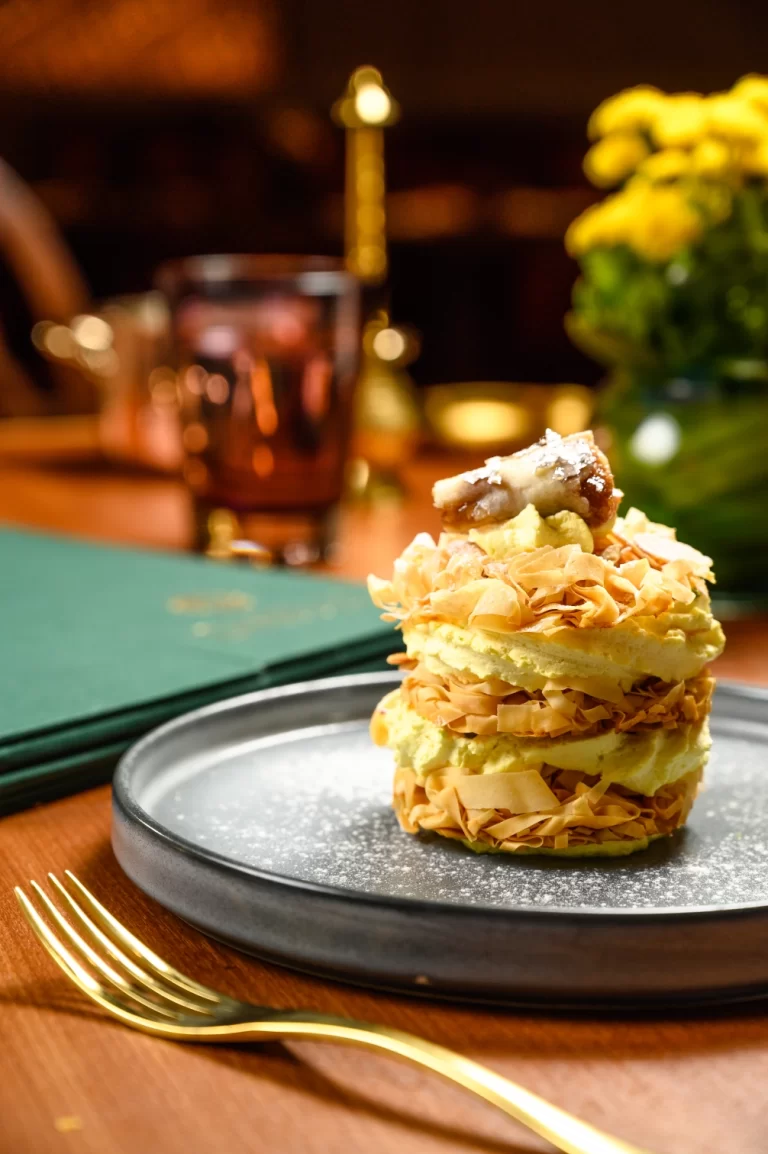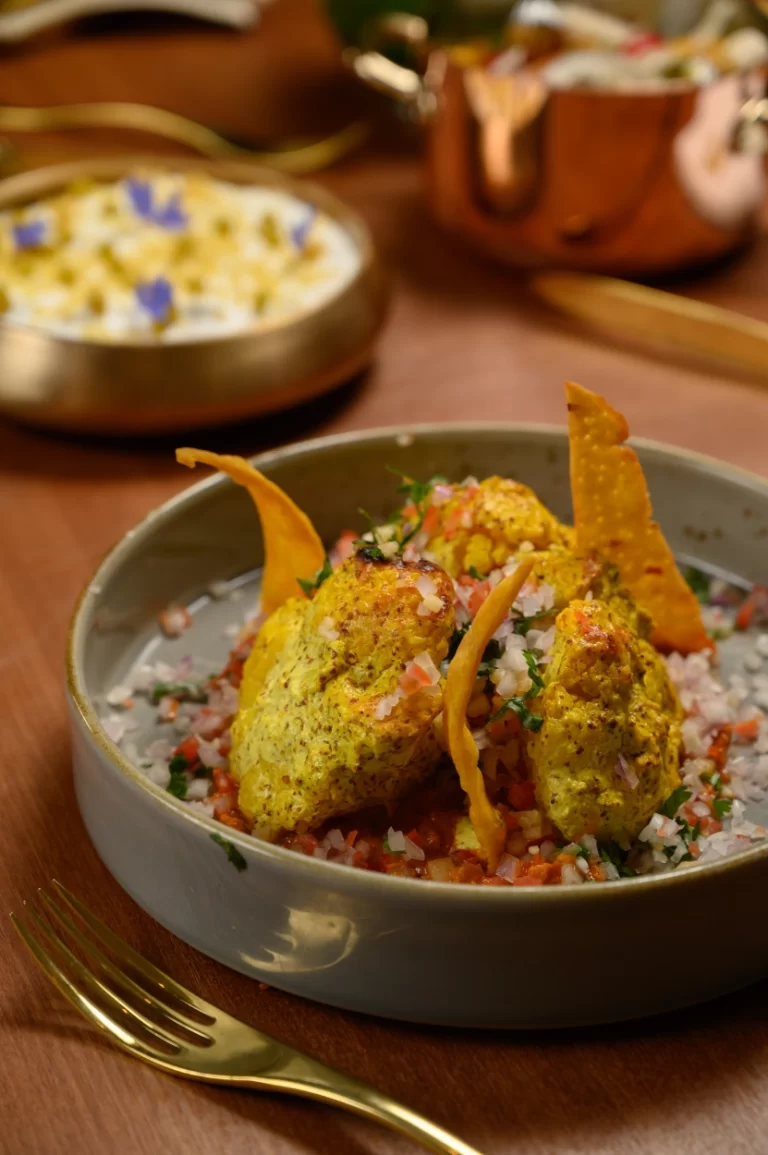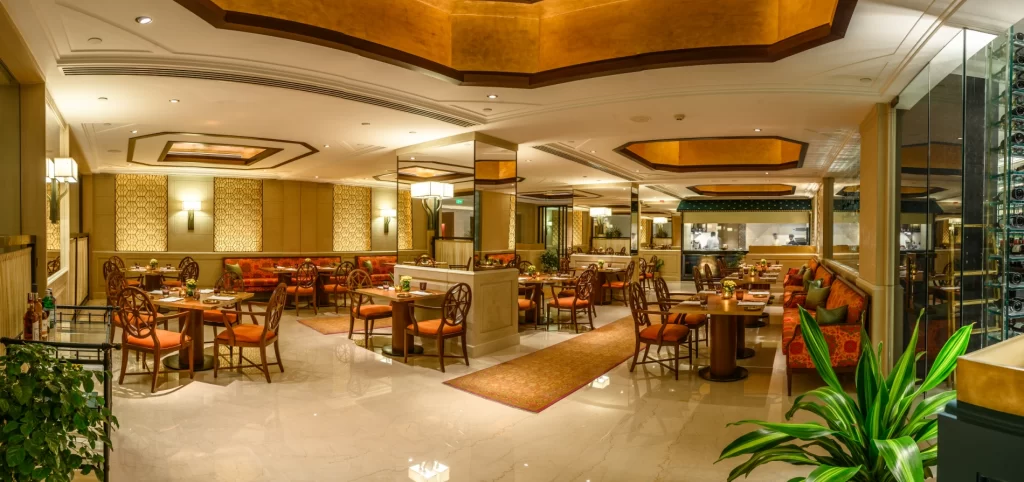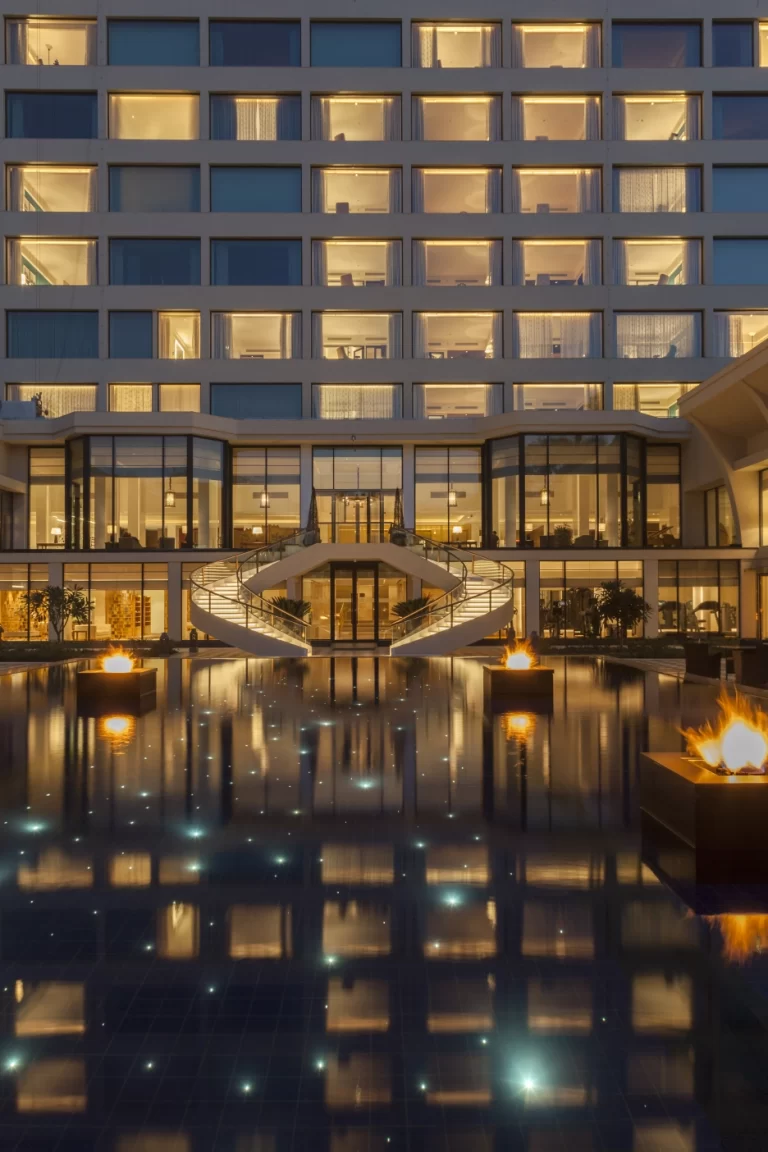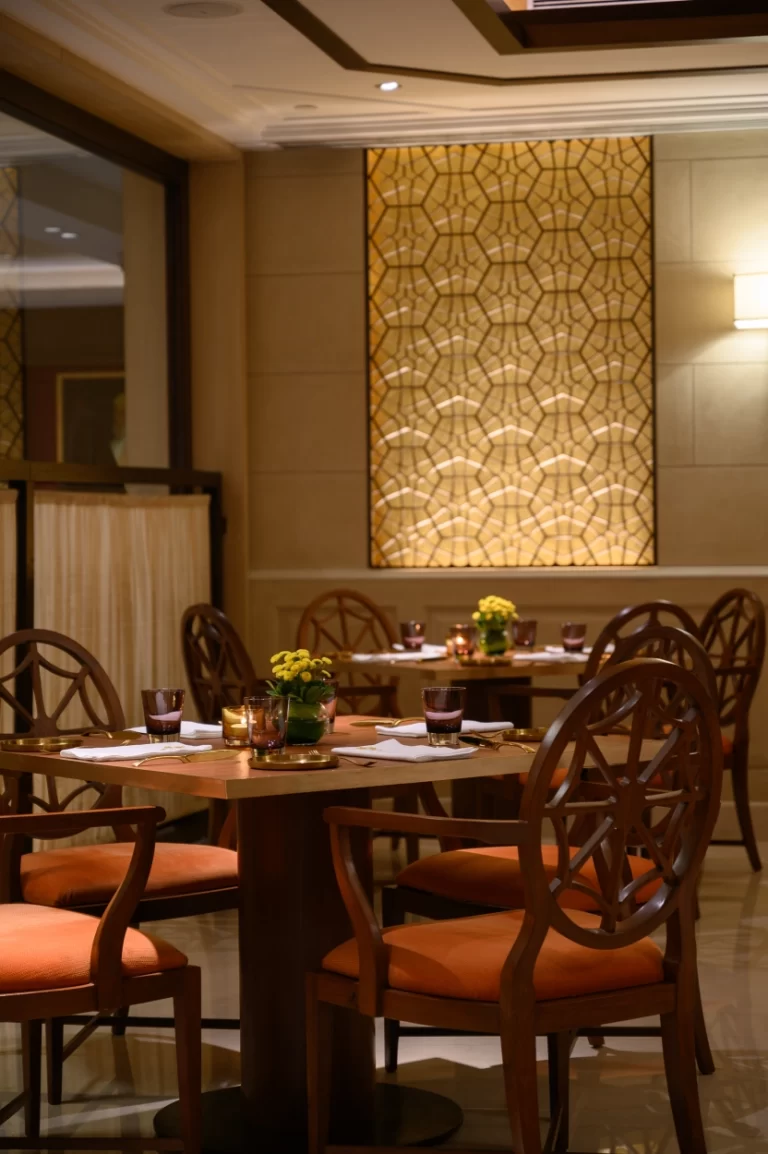The first chef of Indian heritage to be awarded a Michelin star, Chef Bhatia’s culinary expertise has been the foundation for his 10 worldwide in-service restaurants and 15 other former locations. His latest venture, Dhilli at the Oberoi Hotel in India is a work of passion for the chef and his staff. With a menu thoughtfully curated from Dehli neighbourhoods, including Nizamuddin, CR Park, Chandni Chowk, and Rajouri Gardento, Chef Bhati lovingly explores the city’s vast culinary heritage.
Moving to London in 1993 after graduating from the Oberoi School of Hotel Management and becoming Chef de Cuisine at The Oberoi from 1990-1993, Chef Bhatia began to carve a path of culinary excellence. On opening Zaika in 1999, Chef Bhatia was awarded his first Michelin star in 2001 and his second with Rasoi in 2006. Chef Bhatia would be awarded another two Michelin stars in the following years and gained celebrity status by joining MasterChef India as a Judge Host in 2019. Chef Bhatia’s global culinary excellence was official recognised with the appointment of Ambassador for GREAT Britain & Northern Ireland in 2021 and, most recently, Member of the Order of the British Empire (MBE) in 2023.
We asked Chef Bhatia to describe his journey and what he perceives Indian cuisine to be in a modern culinary world.
Why did you choose to pursue a career as a Chef? How did you get your start in OCLD and what were the steps that led to your current position?
I never really wanted to be a chef in the beginning; it wasn’t something that was imagined or planned. It was a natural development, possibly the outcome of an elimination process. Since I was always aware of my lack of academic ability, I immediately disqualified myself from job routes that were the most popular or expected for Indians in India.
My family knew that anything academic wasn’t meant for me and I would succeed and thrive in an artistic and creative environment, so they gently pushed me in that direction after high school.
I found a summer job as a trainee in a hotel. The hotel did not put me at the bar, which is where I originally wanted to be, and instead put me in the kitchen as I wasn’t chatty, tall, or entertaining enough to be at the bar. The hotel happened to be The Oberoi, Mumbai. I learned how regimented and orderly a kitchen should be, even miliary-like; a world unto itself in its own order. This is what initially motivated me and inspired me to become a chef.
What do you enjoy the most about being a Chef?
To begin with, anything to do with a pen and paper, you’ve lost me already, so being in the kitchen allows me to be in a paperless environment. More than that, I just love being around food, feeling food, touching food, and working with food, so for me, this is an excellent industry to be a part of. I consider myself to be one of the luckiest in the world as I not only get to do what I love and enjoy but also earn a decent living out of it. Being a chef puts me in a very happy and creative environment and gives me an opportunity to discover and rediscover our rich culinary heritage, work and talk with the locals who are part of our culinary history, learn from them as to how their generations in the past made a particular dish, and then rework it in my kitchen to present it on a global platform.
What professional and personal experiences drive you forward in your career and push your cuisine style?
My journey, similar to everyone’s life journey, is shaped by the experiences and obstacles that arose in my life path. I am generally driven by the fact that I don’t perceive obstacles as obstacles. I perceive them as a chance to rethink, revisit, and dig deeper into what I can do or how I can work around them. I look at obstacles as something that is teaching me to adapt to changes, keep myself flexible, and come up with workable solutions. During the pandemic, for example, I discovered a way of going on, which meant going digital. Since I love cooking, I still ended up cooking almost every day, and I was blessed to have the opportunity to cook for my family so it meant that while we were cooking, not only could we eat and bond, but I could cook simple things and make the best use of what I already had in the kitchen which required a completely different thought process. Sharing these videos on my YouTube and Instagram reels gave me an opportunity to showcase my food and my culinary ethos in a different medium which I learned a lot from as well.
What or who would you say has inspired your cooking the most?
Inspiration comes from different areas at different stages of your life, but I would put this largely down to my mother because that is where my culinary passion all started. Now, looking back, I understand that the food we ate growing up was very wholesome, tasty, and prepared fresh every day. Often, we take this for granted, and we don’t appreciate the amount of love and effort that goes into cooking. Having these tasty meals prepared by my mother sowed a seed very early on. My mother was a very clever cook who would not go to the market to buy things for recipes; instead, she would open the doors of her pantry and refrigerator, see what she had, and adapt her recipes accordingly. This is what we now call sustainable food usage, but it was always part of her culinary ethos. I absorbed this philosophy like a sponge as a child, and I now understand where all my deep-rooted habits of reusing and recycling everything come from.
How do you deal with the challenges faced both in your kitchen and in the industry as a whole?
Keep calm and carry on. That’s me and has always been me. Funnily enough, that’s one of the sayings that has always resonated so well with me because I like to just put my head down, do what I know I can do, and what I am most happy doing. In stressful kitchen conditions, this becomes more important than doing something for the sake of it. To continue doing something, you need to make sure that it makes you happy and resonates with you.
Keeping a positive frame of mind, not panicking, working out solutions, and discussing them with your peers and colleagues are key. It needs to be an open-ended discussion involving other people and brainstorming with friends and family to finally reach a solution. So, just keep calm and carry on.
What do you think makes a dish successful and what role does creativity play in the process?
I would say it’s a three-way process. You always have to bear in mind who you are serving the dish to, how it identifies with your culinary ethos, and where you are serving the dish. These three things must always be in sync. For example, at Dhilli where the concept is about the rich culinary heritage that has influenced the food in Delhi – the invasions and rulers, with Delhi being the seat of power – digging that out and celebrating it in the restaurant is what the restaurant is all about.
Describe your culinary style. How has it developed over time?
My culinary style is something I have always described as being deeply rooted in my Indian culture and heritage, but also making the best use of the ingredients and produce available. It has always been an evolutionary process. When we got our first Michelin star, again, this was an evolution, as I wanted to present my food in a tasting menu format paired with wines and not served as a curry.
There are so many different memorable experiences: I remember experiencing the horror of seeing what was being served as Indian food [at restaurants in the UK]. This was the starting point when I realized how strongly I felt about the misrepresentation of Indian food and the fact that I detest the word “curry” being associated with Indian food all the time.
Another very memorable experience, which probably led to the whole new definition of how Indian food could be served, was my desire to serve Indian food in a tasting menu format because that is what I had enjoyed at Le Gavroche in the UK; why could you not do that with Indian food? Later, creating these memorable experiences outside of a restaurant setting in a pop-up format was something I discovered. For example, opening pop-up restaurants at the Everest base camp and in Antarctica gave me additional memorable experiences and were the height of joy.
What would you say is the most iconic dish on the menu at Dhilli?
The whole layout and structure of the menu is extremely unique and iconic as it’s not laid out and formatted as starters, main courses, and desserts. I’ve structured the menu so that diners can keep ordering small portions in a sharing format; there’s a certain sense of freedom and comfort that diners will feel when they come into Dhilli.
Choosing a favourite dish from the menu is extremely difficult for me since it really depends on my mood on a certain day, what I feel like eating, and what my cravings are. Chaat is an all-time favourite for me; the chatak chena chaat is an extremely refreshing and unique dish that is perfect for the summers; the akhroti tawa seekh is a brilliant take on the authentic kebabs found in the lanes of Jama Masjid and was a staple at my home during childhood as a tea-time snack. A lot of the dishes on the menu are about recreating experiences we enjoyed on the streets in Delhi and exploring the local food while connecting with the locals. Each dish on the menu at Dhilli has a wonderful and memorable story connected to it.
What do you think makes a restaurant or menu successful? How does the menu at Dhilli reflect the needs or wants of the guests you cater to?
When we conducted the background research for the restaurant, we noticed that some of the key references to historical foods and ingredients are missing. As we scouted the many streets of Delhi for street food styles and our favourite foods, I realised that there is so much more to offer and even more that is missing. Even with my best efforts, I won’t be able to put them all on the menu so I started to blend flavours with the kitchen team of 7-8 chefs. For me, it is about setting a template. So many of my childhood favourites and memories are a part of the menu, so that’s why we launched the menu with these six-seven sections to start with, and over time we will be adding many more.
What do you think makes Dhilli stand out against other restaurants in New Delhi?
For me, Dhilli is an ode to the culinary capital of India. I wanted to showcase what drives Delhi and that there is so much more beyond the land of butter chicken. It has a Jain influence, so samosas weren’t always stuffed with potatoes and peas; instead, there were cauliflower samosas that we serve on our samosa chole board. There were also immigrants from East Pakistan who came to India and were given residency. They occupied a large portion of CR Park, and they are why we celebrate Durga Puja [alongside] Indo-Chinese and Bengal street cuisine.
There is so much more to Delhi than just chole bhature and butter chicken, and I was eager to highlight the diversity, rich history, and deep roots of the city’s cuisine. Many of these dishes have lost some of their significance or importance, but they still need to shine, and I didn’t want to miss out on the chance to highlight these hidden jewels of Delhi through Dhilli.
What changes would you like to see in the global culinary scene?
I feel very hurt every time Indian cuisine is referenced in a derogatory manner or is compared to a cheap meal. It hurts me that our rich culinary heritage is not revered by today’s generation and that they would rather go out and have burgers or pizza and completely disregard their own culture and food. This is why I want to speak to this generation and get them in touch with their culinary heritage and the food that is so complex in so many ways and so flavourful that it can easily beat any other cuisine around the world. Indian food must be put out on the platform it rightfully deserves and be recognised across the globe.
For more information on Dhilli:
The Oberoi
Dr. Zakir Hussain Marg
New Delhi 110003, India.
Tel: +91 11 2430 4454
Website: https://www.oberoihotels.com/hotels-in-delhi/restaurants/dhilli/

